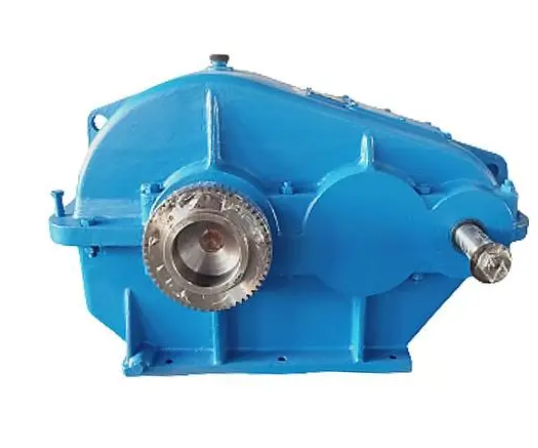Comparison between gear reducer and helical gear reducer: A detailed analysis of the different characteristics of the two

Gear reducer and helical gear reducer are two commonly used devices in modern mechanical transmission, and they have significant differences in transmission mode, structural design, and application fields. This article will provide a comprehensive comparative analysis of these two types of reducers to help readers better understand their differences and applications.
1. Different transmission modes
Gear reducer is a direct transmission device that transmits power through the meshing of gears. It is usually composed of one or more gears that convert high-speed input into low-speed output. Gear reducers have high transmission efficiency and precision, making them suitable for industrial production where high requirements are placed on transmission stability and output accuracy.
The helical gear reducer adopts the helical gear transmission method, which converts the speed and torque of the input shaft into the speed and torque of the output shaft. The transmission efficiency of helical gear reducers is relatively high, and due to the use of helical gear transmission, a larger transmission ratio can be achieved. At the same time, helical gear reducers also have the characteristics of compact structure, smooth transmission, and low noise, and are widely used in some limited space situations.
2. Differences in structural design
The structure of a gear reducer is relatively simple, mainly composed of an input shaft, an output shaft, and gears. Gears usually use cylindrical or conical teeth, and parameters such as gear module and number of teeth need to be considered in the design. The structural design of gear reducers mainly considers aspects such as transmission efficiency, load-bearing capacity, and transmission accuracy.
The structure of a helical gear reducer is relatively complex, mainly composed of helical gears, input shafts, output shafts, and bearings. The design of helical gears usually requires consideration of parameters such as tooth count, pressure angle, as well as the meshing performance of helical gears. In addition, to ensure smooth transmission, helical gear reducers are usually equipped with a certain lubrication system.
3. Differences in application fields
Gear reducers are widely used in various mechanical equipment and engineering fields, such as power, metallurgy, mining, chemical industry, etc. It can provide stable and reliable transmission effects, meeting various situations with high requirements for speed, torque regulation, and transmission accuracy.
The helical gear reducer is mainly used in some occasions with special requirements, such as aerospace, military equipment, high-speed trains, etc. Due to its high transmission efficiency and compact structure, helical gear reducers are widely used in these fields as they can meet the demand for large torque transmission in limited space.


